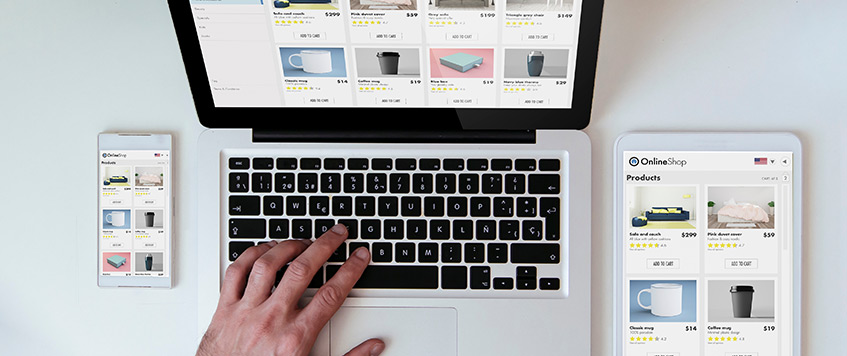A well-designed website is essential for any E-commerce business. Consumers must be able to easily navigate a website to find what they are looking for. If customers have a positive experience while using a website, they are more likely to return and purchase again.
The same is true for in-store shopping: if you have difficulty finding what you are looking for, you are unlikely to return. So, whether online or in-store, a great user experience will guide customers smoothly through the shopping process, increasing customer satisfaction, and the company’s revenue.
In this blog, we’ll go over some of the most important aspects of E-commerce web design that ensure online stores are user-friendly, dependable, and retain customers.
1. An intuitive user experience throughout the online shopping experience
It’s as simple as that: a poor user experience prevents visitors from converting. This is why shopping cart abandonment (when visitors leave your site without making a purchase) is one of the most serious issues confronting e-commerce businesses today. Designers work hard to create smooth transitions, such as finding a product, adding it to the cart, and making the purchase.
To simplify the online shopping experience, designers must consider the following factors: accessibility, usability (for example, limiting the number of fields a user must fill out during the checkout process), and conversion without forcing users to commit.
Furthermore, smart product recommendations and personalized content are becoming increasingly popular among e-commerce businesses. Personalization can significantly improve the user experience and, as a result, the conversion rate. When designing user journeys, it is critical to keep this in mind.
2. Design that is responsive
With the rise in online e-commerce traffic via smartphones and tablets, having a consistent experience across multiple devices is critical. Websites that do not provide a mobile-friendly experience are likely to drive away customers and lose out to competitors who may be one step ahead.
Simplified interface design, micro-interactions that improve a user’s experience, image zoom support, content hierarchy, and page loading times are all practices to consider when designing mobile for E-commerce.
3. Simple navigation
A user attempting to purchase from your website should be able to find their desired item immediately. Your site’s navigation must be obvious and organized to direct and assist customers. With prominent categories and sub-categories, the navigation should be easy to find. After all, if a user cannot find an item, they will not purchase it!
A prominent search bar is an important feature that all E-commerce sites with large selections should think about. It enables users to find exactly what they are looking for.
4. A call to action
A call to action (CTA) directs visitors to the next step they should take, and in the world of e-commerce, a well-designed CTA can convert a visitor into a customer.
On the other hand, using a standard CTA may not be the most effective way of capturing users’ attention and encouraging them to take the next step. You want your button to stand out, but it can’t be too ‘aggressive.’ It must be consistent with the rest of the site.
When designing a CTA, keep the following factors in mind: contrasting colors, size, spacing, shape, and effective copywriting. We also recommend testing various CTAs to determine which version performs best with your customers.
5. Product photography of high quality
Because online customers cannot touch products before purchasing them, the best way to showcase a product is through high-quality photography. Customers will understand what you’re selling better if the items are photographed from various angles, realistic settings, and important product details highlighted. The addition of 360-degree product viewers is also a nice touch.
A consistent yet creative approach can go a long way in converting visitors into customers, increasing brand awareness, and allowing people to get an overall “feeling” of your company through the aesthetics of your photographs.
6. Content that is concisely written
Beautiful photography should always be accompanied by descriptive copy that is appropriate and detailed. It will assist customers in better understanding your product. Overcrowding an E-commerce website with copy can make customers feel overwhelmed. Let’s face it: no one wants to read long, boring paragraphs.
Condensing and shortening the copy makes the information easier to digest and encourages visitors to actually read it! Creative copywriting, like photography, can help you better appeal to your potential customers. Make sure the language is appropriate – for example, with younger audiences, a more fun, casual copy can be used.
Finally, there are more than six aspects of E-commerce web design to consider, but these are the most important. Keep in mind that no two E-commerce websites are alike!
To keep yourself updated on emerging trends in eCommerce Website Development and Digital Marketing, keep in touch with Red Berries – An ace eCommerce website development company in Dubai. If you have any questions, require any help or you looking for a Digital Marketing Agency In Dubai, then, contact us today!. Also like us on Facebook, follow us on Linkedin and Twitter for more updates.

